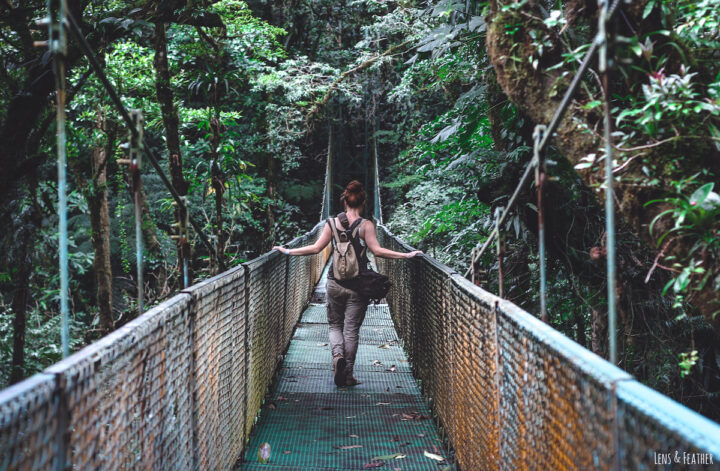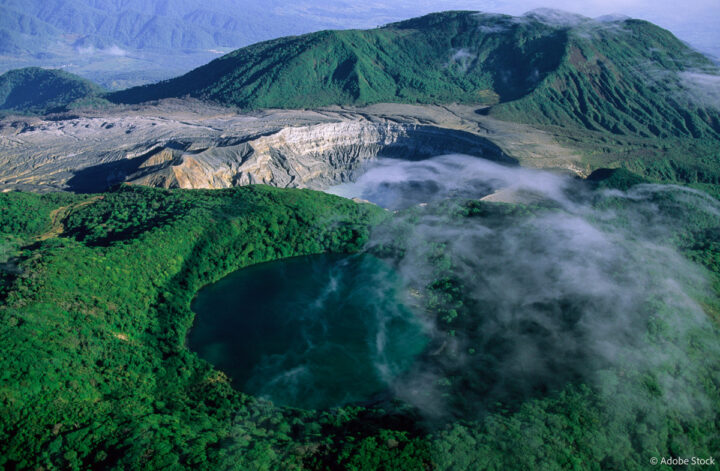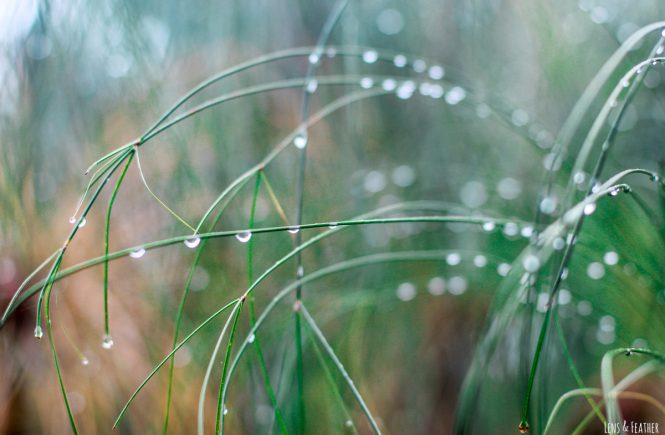A cool breeze cuts through the tropical heat, small dew drops glisten on the moss-covered vines along the path, adrenaline junkies zip over the gigantic treetops, and through the dense canopy of the cloud forest, the magnificent feathers of a shy Quetzal shimmer. Welcome to Costa Rica’s mysterious natural paradise, Monteverde.
Monteverde is a must-visit destination for almost all travelers to Costa Rica. This is mainly because this popular destination offers endless possibilities for every type of traveler – except maybe for surfers.
It is a true paradise for outdoor enthusiasts, hikers, nature lovers, bird watchers, adventurers, adrenaline junkies, and even for those with a sweet tooth.
Wanna prepare your trip to Monteverde and are feeling a little lost in this jungle of opportunities? Don’t worry, I have compiled my best information, recommendations, and experiences about Monteverde and Santa Elena.
From the top things to see and do in Monteverde to the longest hanging bridges and fastest canopy tours to tourist traps, my accommodation recommendations, and travel tips, everything you need to know about Monteverde you will find in this article.
Shortcuts
Things to know about Monteverde
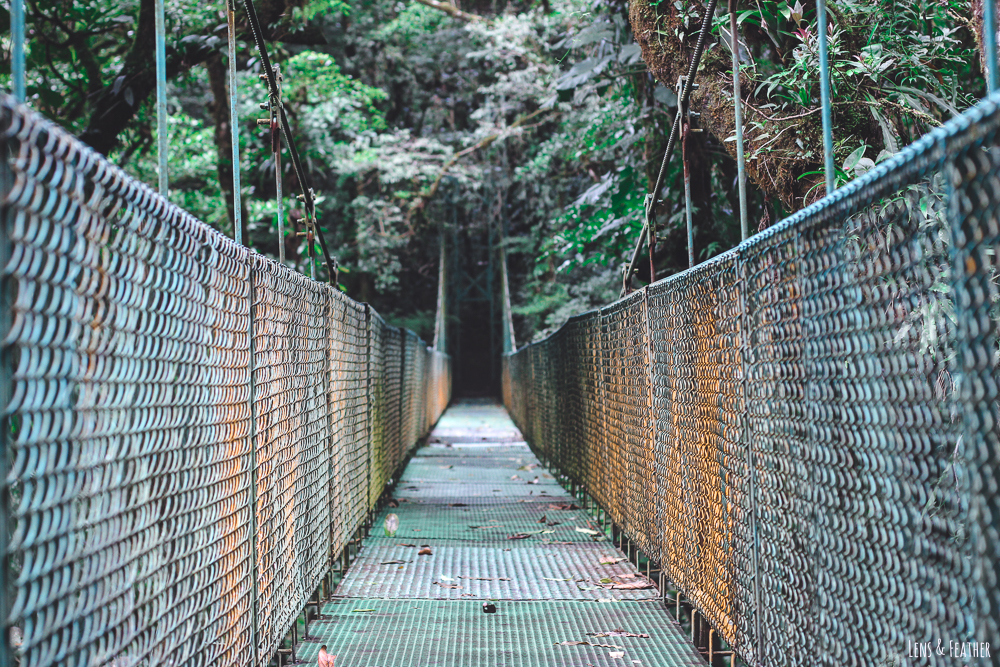
The influence of the Quakers
The community of Monteverde is located at 1,400 meters above sea level in the Tilarán Mountains in northwestern Costa Rica. The pristine, hilly farmland with its rich volcanic soil and temperate climate attracted a small group of Quakers from the United States in 1951.
As Quakers are pacifists by faith, they did not want to support the Korean War either as soldiers or through their taxes in the USA, nor did they want to live in a society that profited from war.
Since Costa Rica had abolished its army in 1948 and also enticed with fertile land for promising livestock farming, eventually 44 Quakers left their home in Alabama to settle in the green place. This is how Monteverde got its fitting name, which literally means “green mountain.” Interestingly, the Quaker community still advocates for conservation efforts there today.
How Monteverde became a top travel destination
In 1983, Monteverde was hailed by National Geographic as the best place to observe the rare Quetzal bird. This catapulted the small Quaker village to fame overnight, drawing unexpected crowds of visitors.
In 1994, (probably) the world’s first Canopy Tour was established in Monteverde, sparking a tourism boom that continues to this day.
Monteverde or Santa Elena?
When we talk about Monteverde today, we usually refer to the entire area surrounding the small Quaker settlement of Monteverde, the village of Santa Elena, and the adjacent cloud forests.
So don’t be confused by the name, as to explore Monteverde, you will likely find a suitable accommodation in Santa Elena rather than in Monteverde itself.
What to do and see in Monteverde
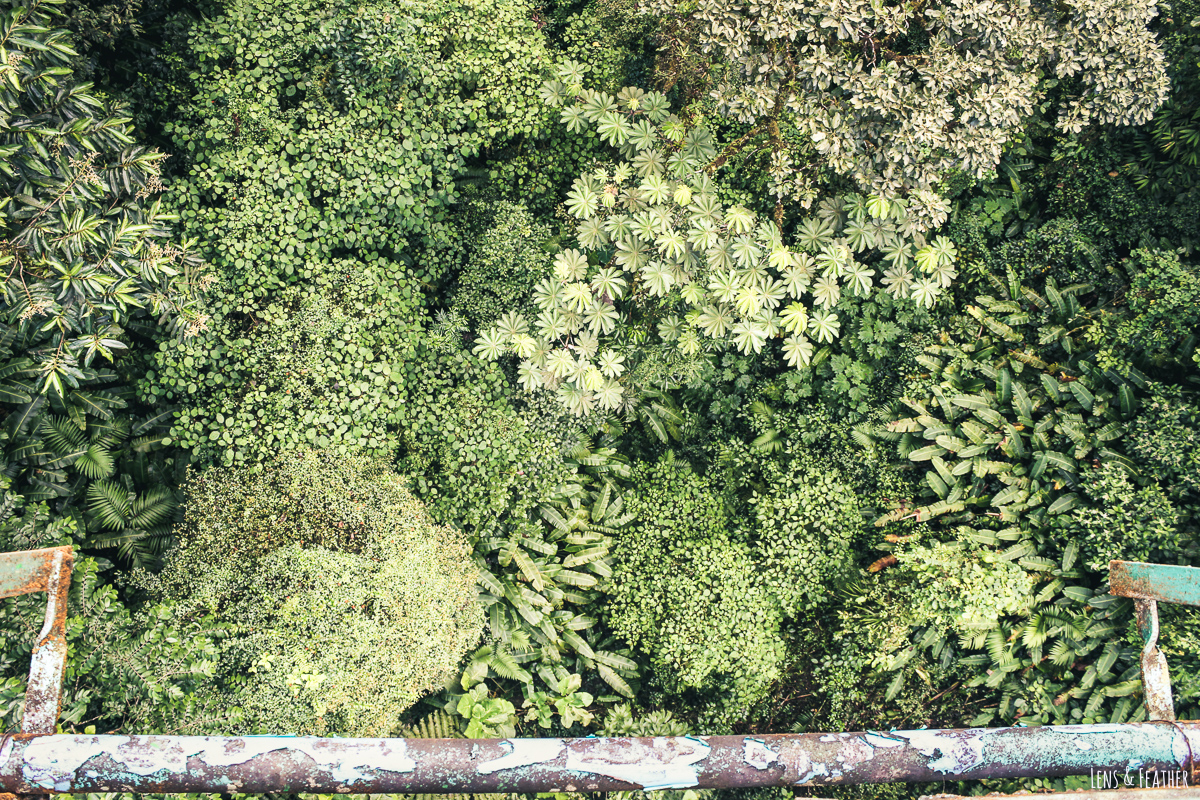
One thing I can guarantee you in Monteverde: It won’t get boring. Whether you’re an adrenaline junkie, bird watcher, insect researcher, nature lover, hiker, or all of the above, in Monteverde, you have plenty to explore.
The most famous activities in Monteverde are the hanging bridge trails and canopy tours.
However, there are also a variety of smaller activities that you shouldn’t simply forget amidst all the action offerings. With prices ranging from $5-15, they also save your wallet and are perfect for rainy days in Monteverde.
Visit the ficus tree
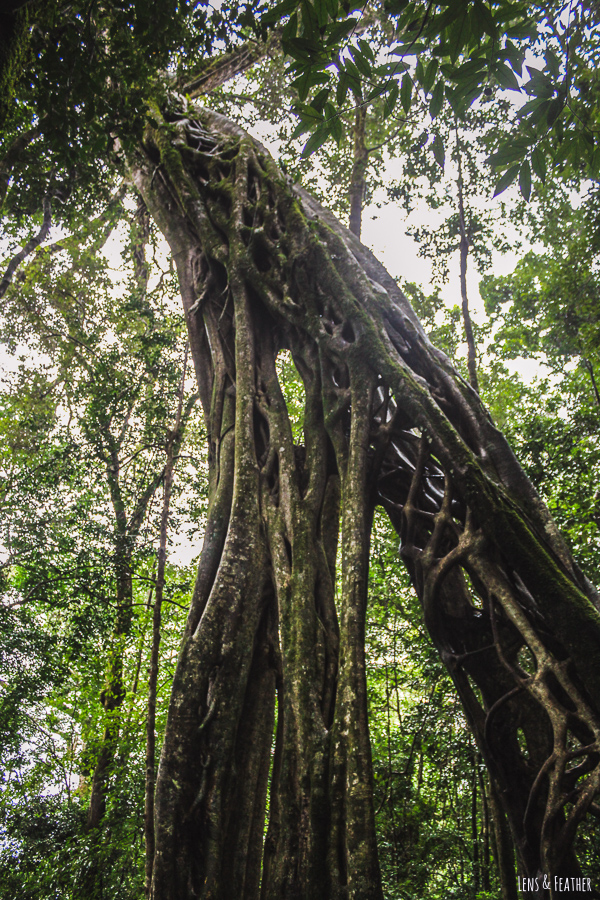
My little insider tip for Monteverde is the Ficus Tree! It is located not far from the town center, completely free of charge, and simply mind-blowing.
The huge, abstract tree is truly worth seeing, and you can even go inside the trunk.
To find the Ficus Tree, simply follow the route to the Cloud Forest Lodge or the Original Canopy Tour. At the last fork in the road before the Cloud Forest Lodge, a few paths lead into the forest. Then take any of the paths, and after a few minutes, you should arrive at the unmistakable Ficus Tree.
Update 2024: some travelers have reported to me that the Ficus Tree in Monteverde is currently not accessible. Feel free to send me your personal experiences to confirm this information.
Go hiking and observe wildlife in the cloud forest
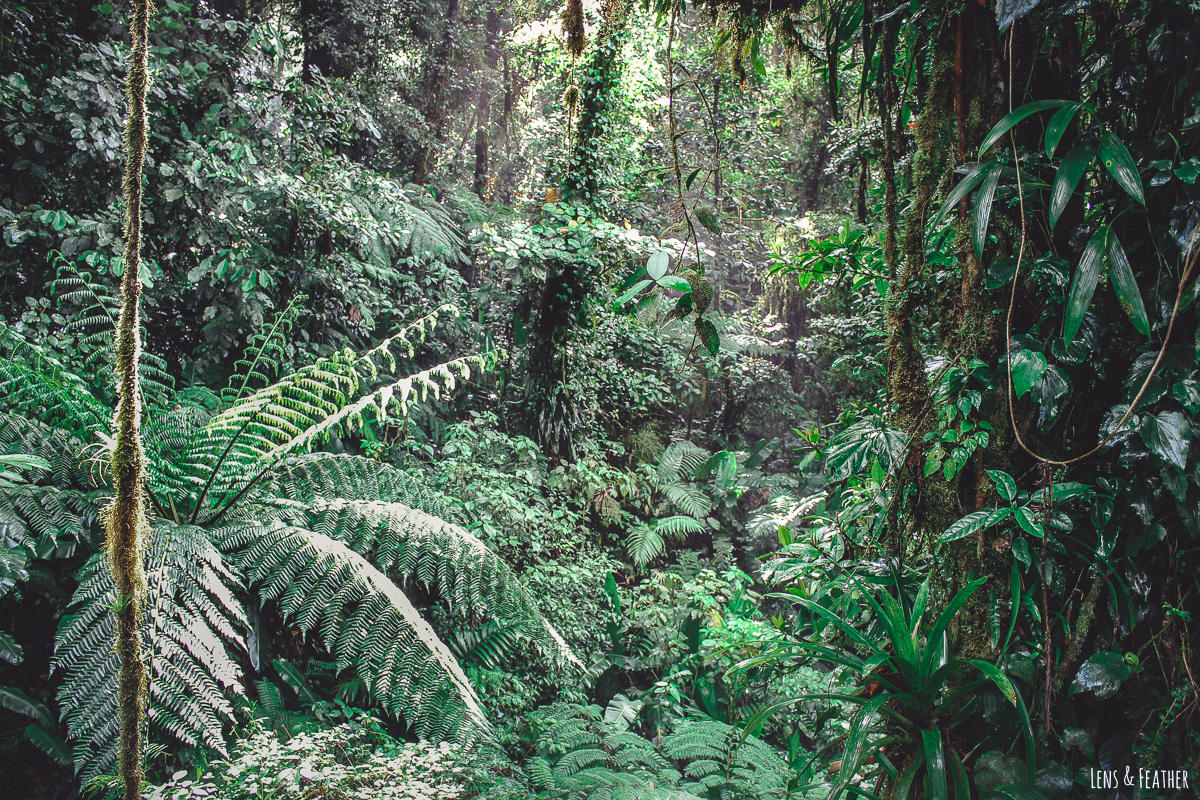
The biodiversity of this cloud forest is simply incredible. You could probably spend a whole lifetime in this forest without ever seeing the entire variety of flora and fauna. Additionally, about 10% of the species are endemic, meaning they are only found there in Costa Rica.
Visit the Monteverde Biological Reserve
In the famous Reserva Biológica Bosque Nuboso Monteverde, you have access to a network of 13 km of well-maintained hiking trails. They lead you into a magical forest, past moss-covered vines and babbling brooks, through misty clouds and mystical marshland to roaring waterfalls and true postcard motifs.
To protect this delicate environment, a maximum of 160 people are allowed to enter the nature reserve at the same time. Therefore, the maximum capacity is often reached early in the morning during the peak season.

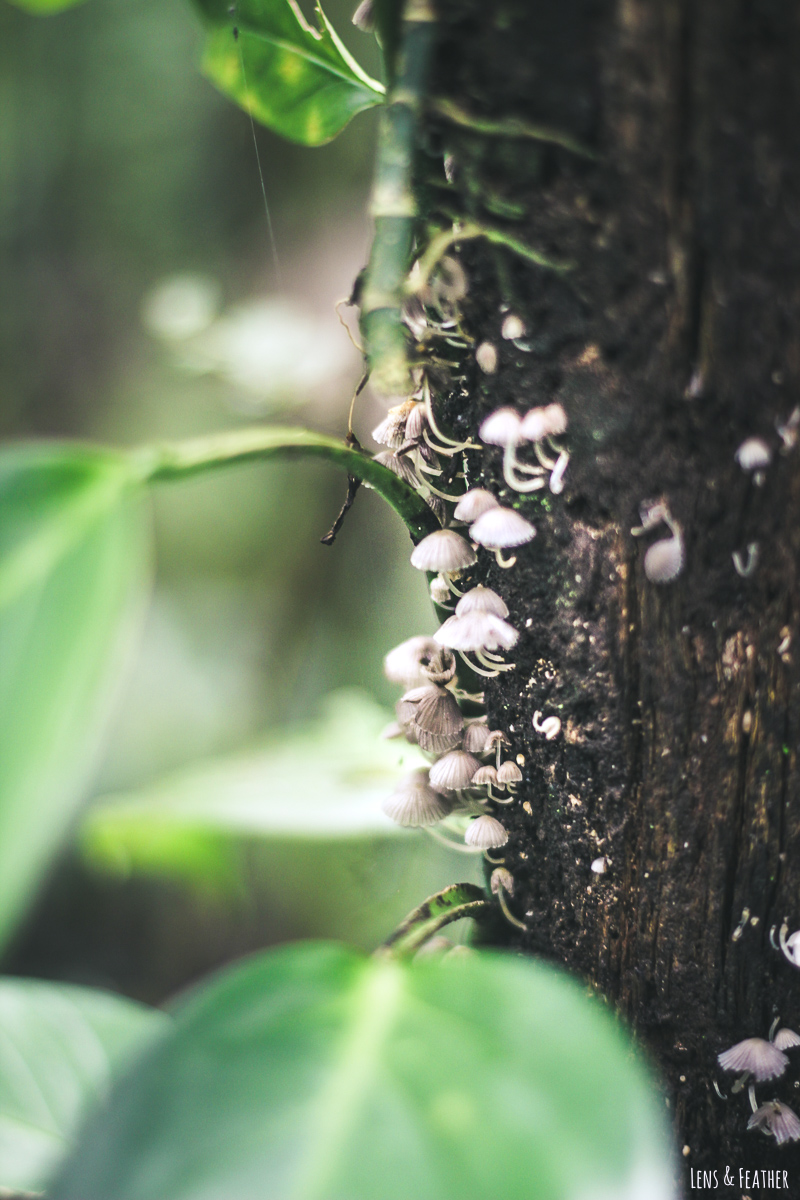
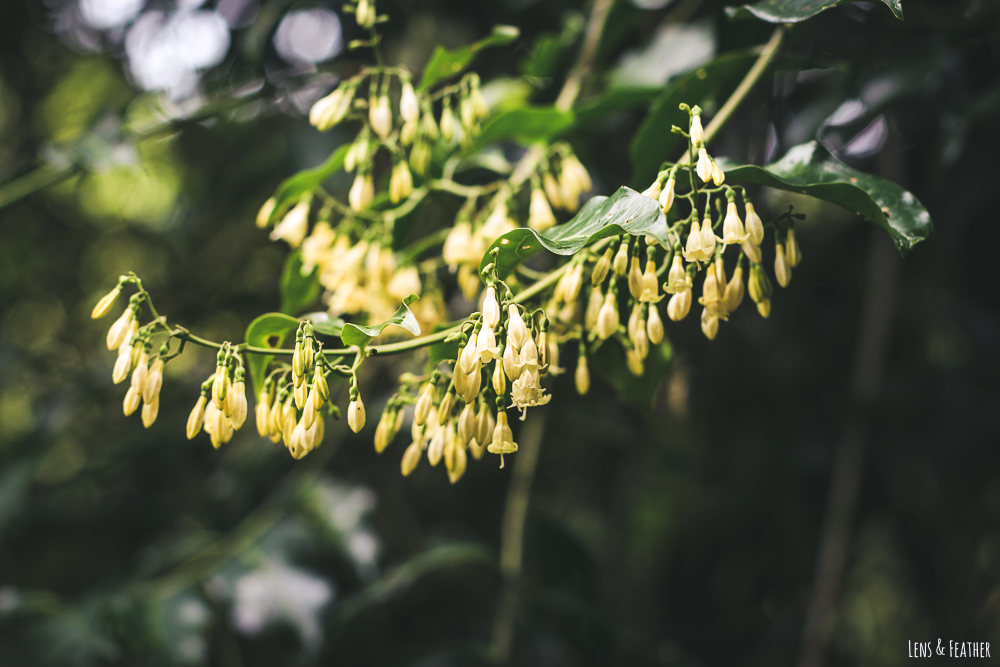
Tip: It is recommended to arrive at the Monteverde Reserve as early as possible or consider visiting the alternative Santa Elena.
From the Banco Nacional in Santa Elena, four buses run daily to the Monteverde Reserve for less than $2 and return until 4 pm. Simply inquire at your accommodation for more details.
The reserve is open from 7 am to 4 pm and entrance fees range from $10 to $22.
For more information about the Monteverde Reserve, visit www.cloudforestmonteverde.com.
Visit Santa Elena Reserve
While it may not be as famous as its larger neighbor Monteverde, the Santa Elena Reserve has just as much to offer. Unless you’re a biologist, you’ll likely barely notice the difference.
Here, you’ll find a 12 km network of trails of varying difficulty, perfect for hiking, wildlife spotting, and birdwatching.
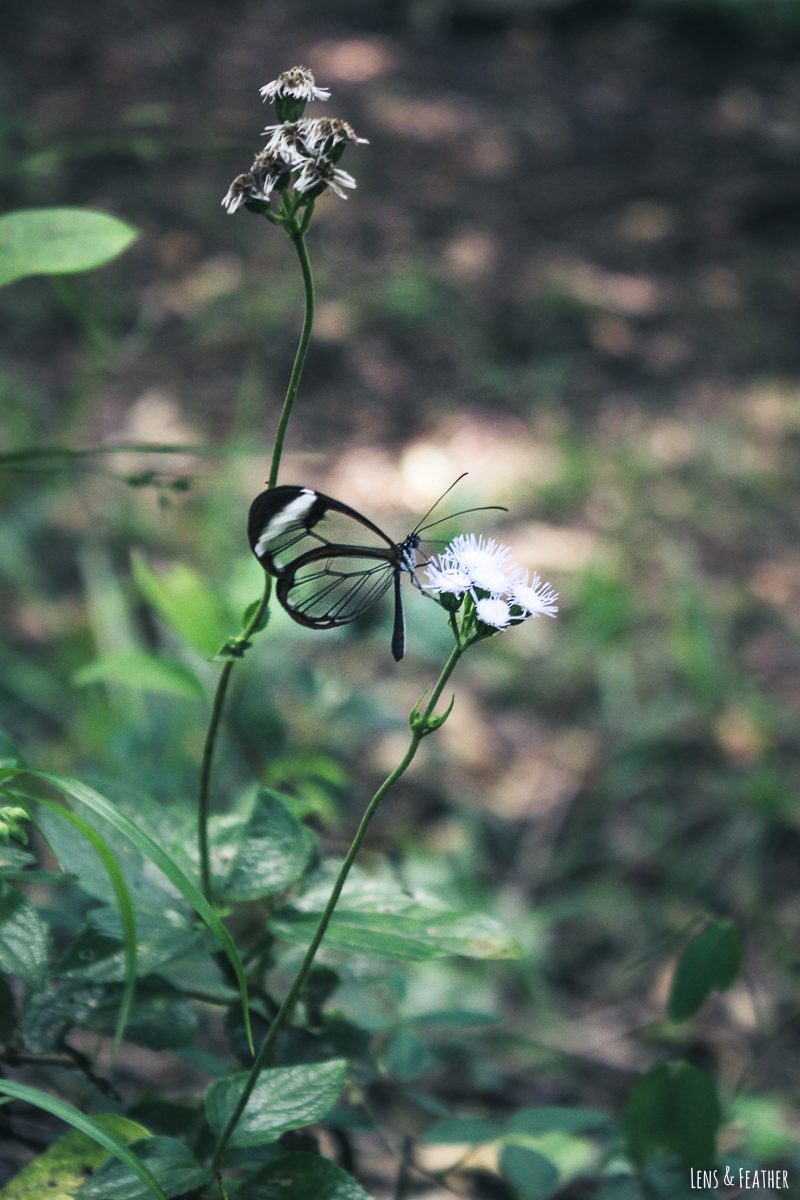
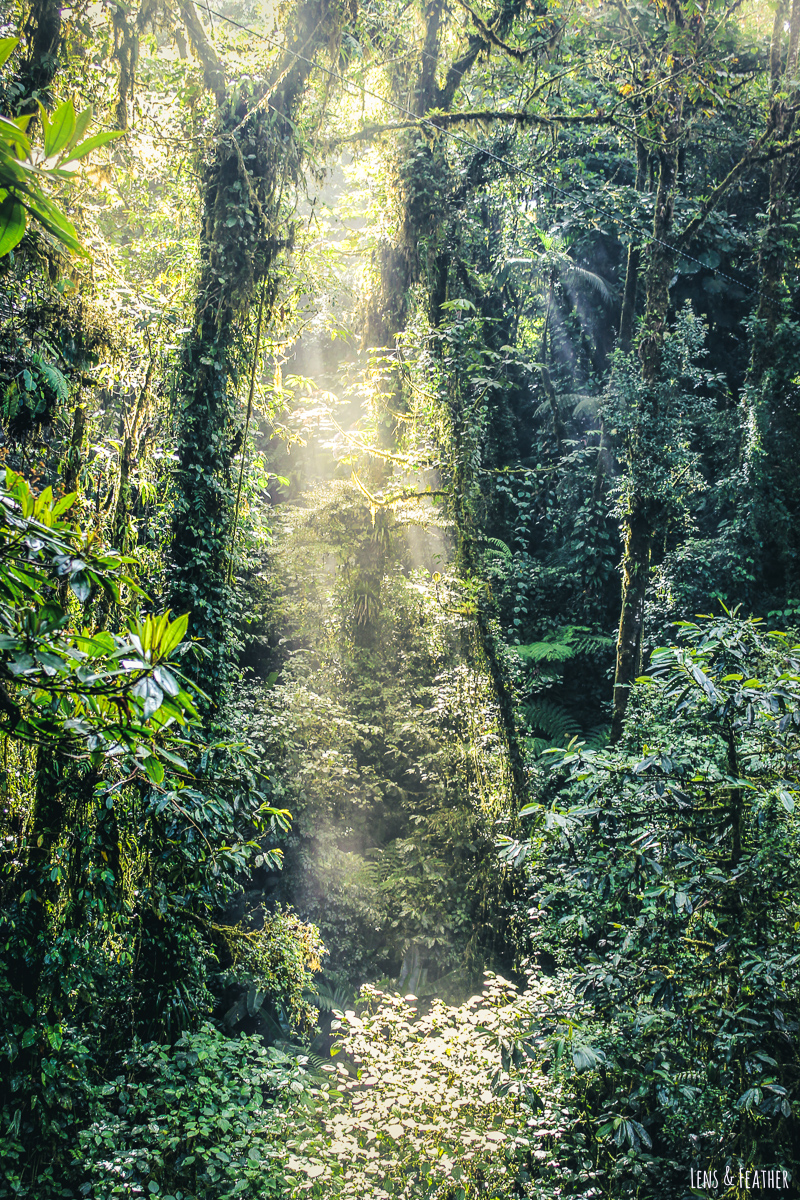
As is often the case, the lesser-known status of this nature reserve comes with a major advantage: there are significantly fewer tourists here than in Monteverde. Especially during the dry season, it’s worth choosing this reserve instead.
A bus departs from the Banco Nacional in Santa Elena four times daily, costing $2 each way.
The reserve is open from 7 AM to 4 PM, with an entrance fee ranging from $7 to $16. Children under 7 can enter for free.
For more information about the Santa Elena Reserve, you can visit www.reservasantaelena.org, though unfortunately, details are currently only available in Spanish.
Hike on hanging bridges above the trees of the cloud forest
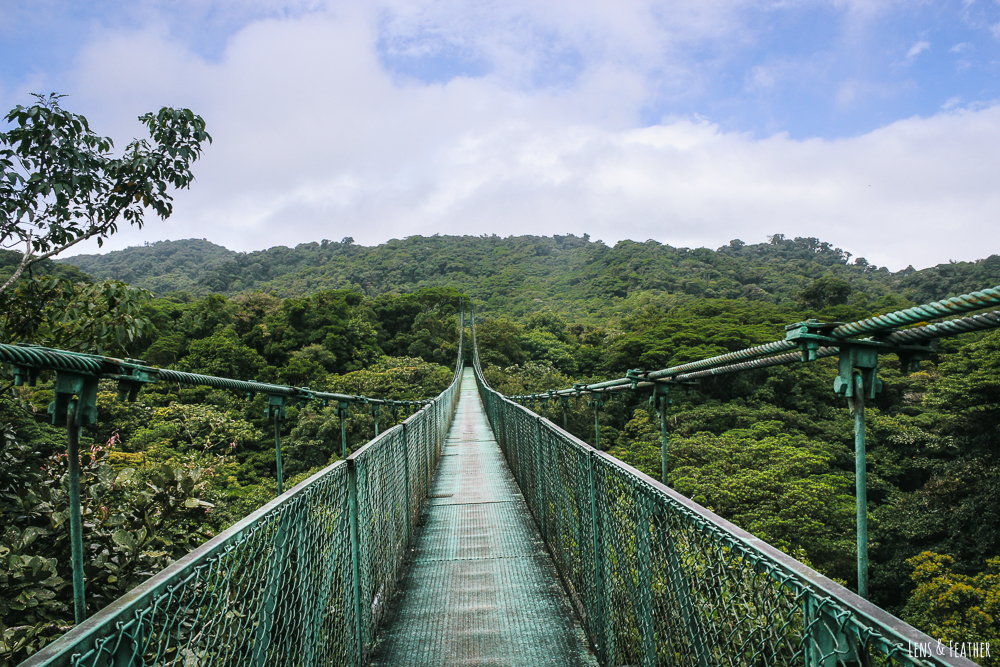
The most spectacular hanging bridges in Costa Rica can undoubtedly be found in Monteverde.
These bridges don’t just span gorges and rivers—they allow you to explore the cloud forest at eye level with the towering treetops, offering a unique perspective on the incredible diversity of flora and fauna.
This way, you won’t disturb the forest dwellers on the ground, and you’ll have a better chance of spotting exotic birds in the treetops.
The hanging bridges are the perfect cloud forest experience for anyone who wants to explore Monteverde’s canopy at dizzying heights but at their own pace.
Soar through the cloud forest on a canopy tour
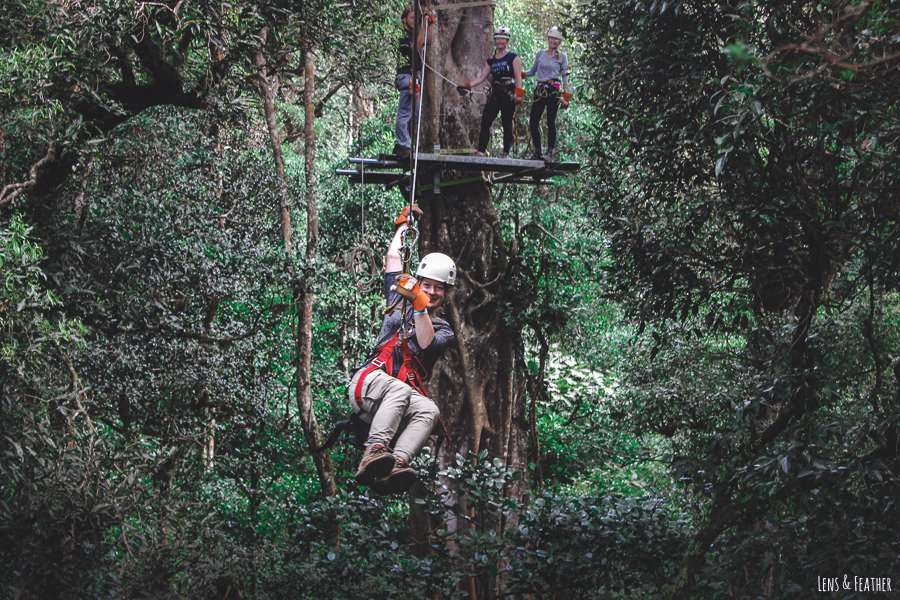
The dizzying heights of the hanging bridges aren’t adventurous enough for you? Then a canopy tour or even bungee jumping in Monteverde might be just what you’re looking for.
During a canopy tour, also known as zip lining, you’ll be strapped into a safety harness, clip onto a taut steel cable, and zip from platform to platform through the rainforest. Of course, you’ll be triple-secured and accompanied by an experienced guide.
This thrilling experience allows you to explore Monteverde’s cloud forests from a completely new perspective, all while getting a serious adrenaline rush. The views from the platforms are absolutely breathtaking!
If you’re not afraid of heights, you definitely shouldn’t miss out on this unique adventure.
You can find my personal experience with the hanging bridges and zip lining further down in this article.
Experience Costa Rica’s wildlife up close
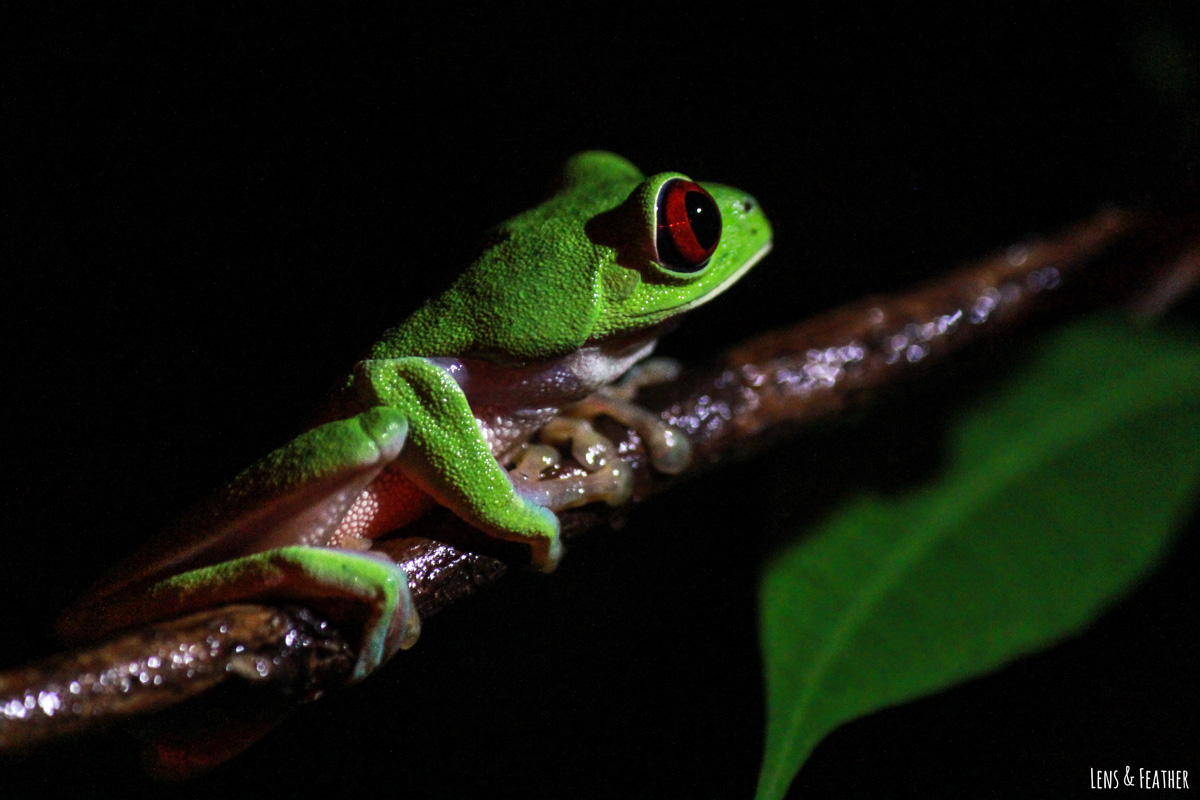
Night Tour in the Cloud Forest
Most of the animals in the cloud forest are nocturnal, making a guided tour after sunset a truly special experience. On this tour, you can observe a wide variety of species—from insects to sloths—that you would never encounter in daylight.
If you’re unsure whether a night tour is right for you, I recommend checking out my experiences and photos from the night tour in Corcovado National Park beforehand.
In Monteverde, the main providers for night tours are Kinkajou Night Walk and Olingo Expeditions Monteverde.
Monteverde Butterfly Gardens
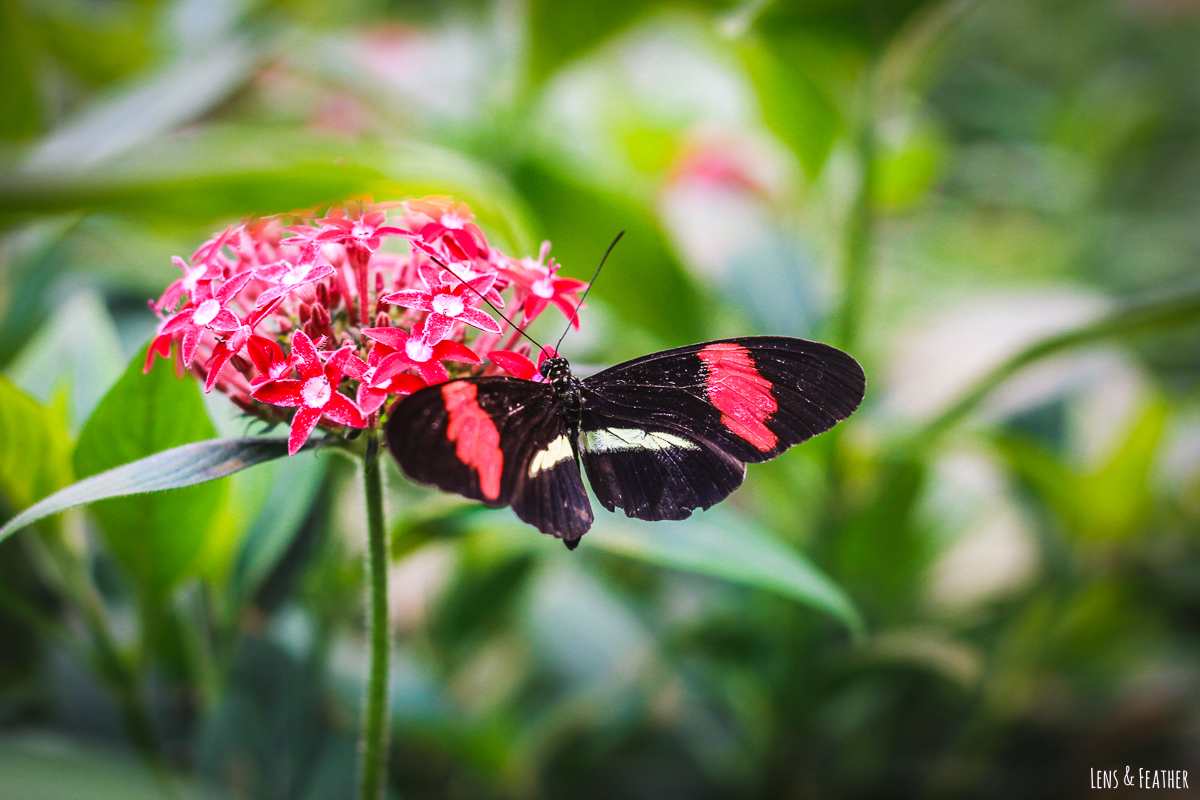
Another great destination is the Monteverde Butterfly Gardens, where you can explore four different gardens and discover over 40 species of butterflies.
With a bit of luck, you might even witness new butterflies emerging from their chrysalises.
Bat Jungle
Even more exciting than the butterfly gardens is the Bat Jungle. Though it’s not very large, it is home to nearly 100 bats and offers plenty of interactive information about these creatures, echolocation, and even a special ultrasonic microphone that lets visitors hear bat sounds in real time!
Serpentarium

If you’re more interested in cold-blooded creatures, the Serpentarium is the place for you.
Here, you can safely observe around 40 species of snakes as well as native frogs, lizards, and even turtles.
Frog Pond
If snakes aren’t your thing, you might want to explore the Frog Pond instead. It features over 25 species of native frogs, toads, and other amphibians, with a knowledgeable guide providing detailed information during your visit.
Tip: It’s best to visit in the evening, as most frogs are more active at night.
Savor Monteverde’s culinary delights
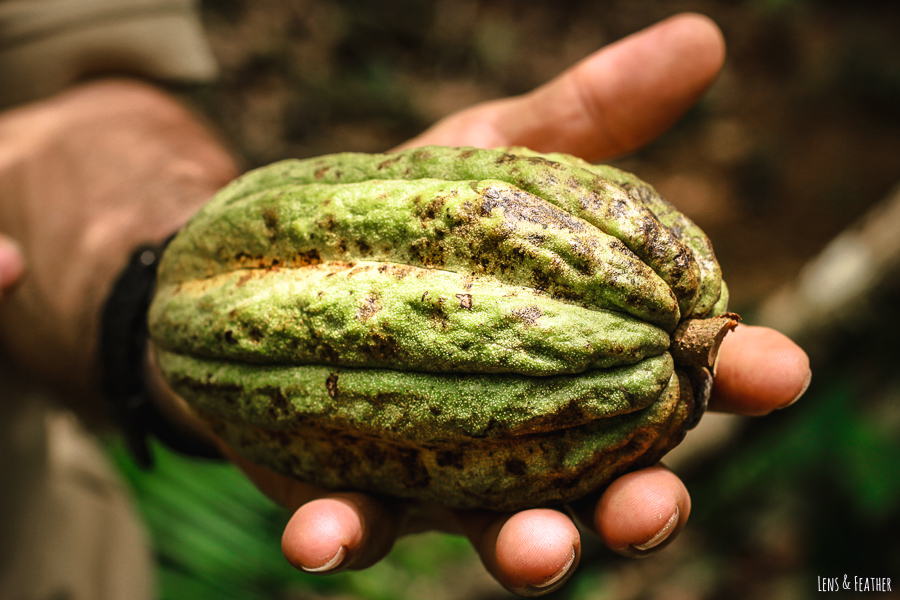
Monteverde isn’t just a haven for nature lovers; it also offers a range of delicious culinary experiences that you shouldn’t miss. Here’s a taste of what to expect:
Coffee Tour
The coffee tour at Café de Monteverde is a highly recommended way to get up close and personal with Costa Rica’s famous beverage and understand its significance to the country.
The tour is offered by the Cooperative Santa Elena, which supports local businesses and families while promoting sustainable and organic farming methods. At the end of the tour, you’ll have the chance to participate in a coffee tasting, where you can try to distinguish between different coffee varieties.
Chocolate Tour
Café Caburé in Monteverde is an Argentine restaurant, chocolate shop, and coffeehouse all in one. For those interested, the café offers a chocolate tour where you can learn all about this delicious treat and even get hands-on with the process.
During the tour, you’ll be guided through the entire chocolate-making process, from the cacao bean to creating your own truffles or chocolate bars. The chocolate tours are available Monday through Saturday at 1:00 PM and 4:00 PM.
Sugar, Coffee & Cacao Tour
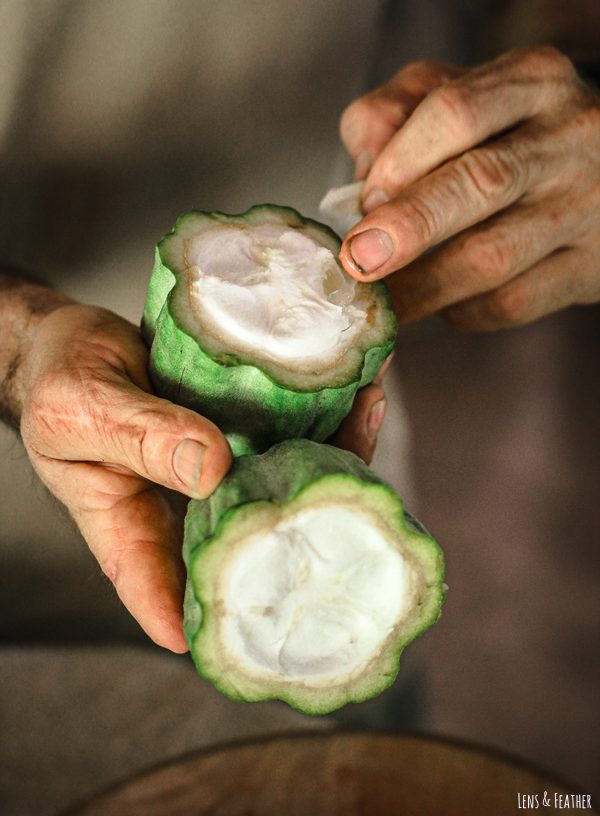
If you are like me and can’t decide between chocolate and coffee, here’s the right experience for you!
The Sugarcane, Coffee & Cacao Tour offers a unique opportunity to explore a Costa Rican family-owned farm that grows sugarcane, coffee, chocolate, bananas, plantains, oranges, and more.
On this tour, you’ll get to know the entire farm and its products, with a special focus on coffee and chocolate production as well as sugarcane, all of which you’ll get to taste!
The tour might include an optional ride on a traditional ox cart, adding a bit of historical charm to the experience.
Reserve activities & tours in Monteverde online
Since Monteverde is one of the most popular travel destinations in Costa Rica, I highly recommend reserving your activities and tours online in advance, especially during the peak travel season. If your plans change, you can easily cancel your reservation for free up to 24 hours before the scheduled time:
My personal experience: hanging bridges and canopy in Monteverde
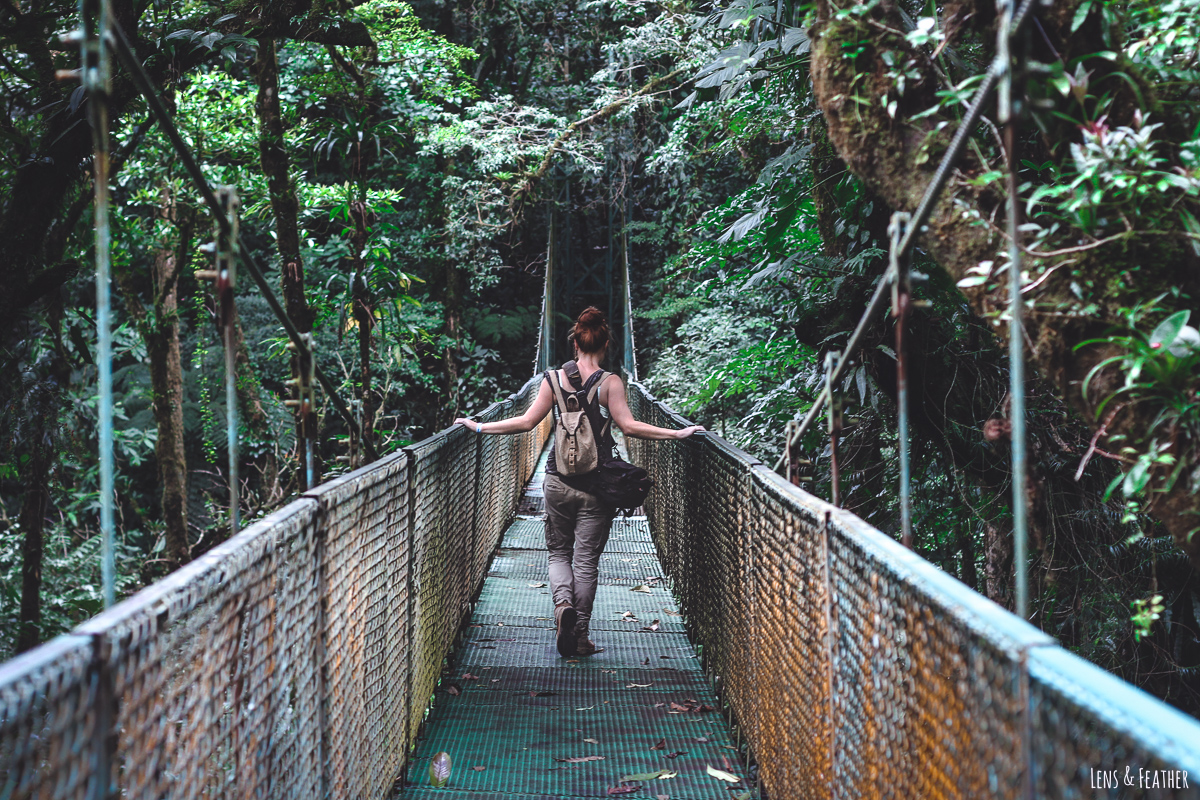
The thought of walking across those massive hanging bridges had my adventurous heart racing even before I arrived in Monteverde.
Fortunately, I’m not afraid of heights, so I knew I couldn’t miss the chance to explore both the hanging bridges and a canopy tour. I did some research to find the tours that would best suit my interests.
If you’re after the biggest, fastest, or highest zip lines in Monteverde, check out providers like Sky Trek, Aventura, and Extremo Canopy. They offer everything from Tarzan swings to bungee jumping for those seeking an adrenaline rush.
But for me, it was important that while the adventure was exciting, the focus remained on experiencing the cloud forest and connecting with nature.
That’s why I opted for the hanging bridge trail at Selvatura Park and the Original Canopy Tour. Admittedly, I was also drawn to the idea of experiencing the very first canopy tour, rather than the fastest one.
Anyways, you’re definitely faced with the delightful dilemma of choosing from a range of superlative adventures in Monteverde.
The Selvatura Park
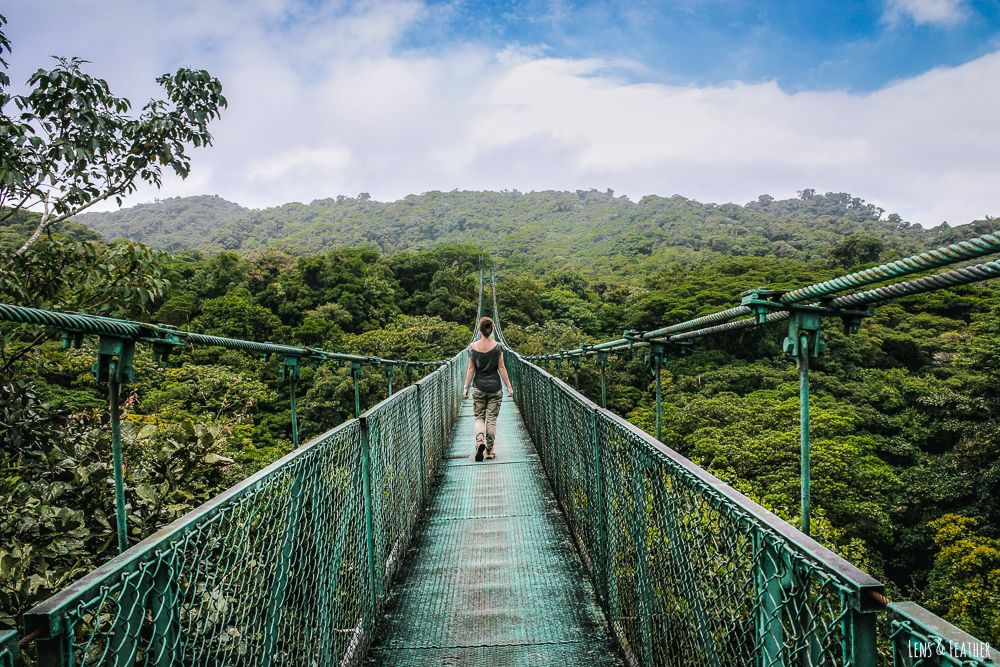
Selvatura Park protects around 750 acres (300 hectares) of forest and offers more than just its famous hanging bridges. You’ll also find canopy tours, a butterfly garden, an insect museum, and a reptile and amphibian exhibit.
Except for the canopy tour, you can explore the different parts of the park either with or without a guide.
Since I had already visited the Waterfall Gardens at La Paz, I chose to focus solely on the hanging bridge trail at Selvatura Park.
The trail spans 1.9 miles (3 kilometers) and features eight hanging bridges of varying lengths, some of which stretch high above the cloud forest canopy. The longest bridge measures an impressive 560 feet (170 meters), reaching heights of up to 200 feet (60 meters).
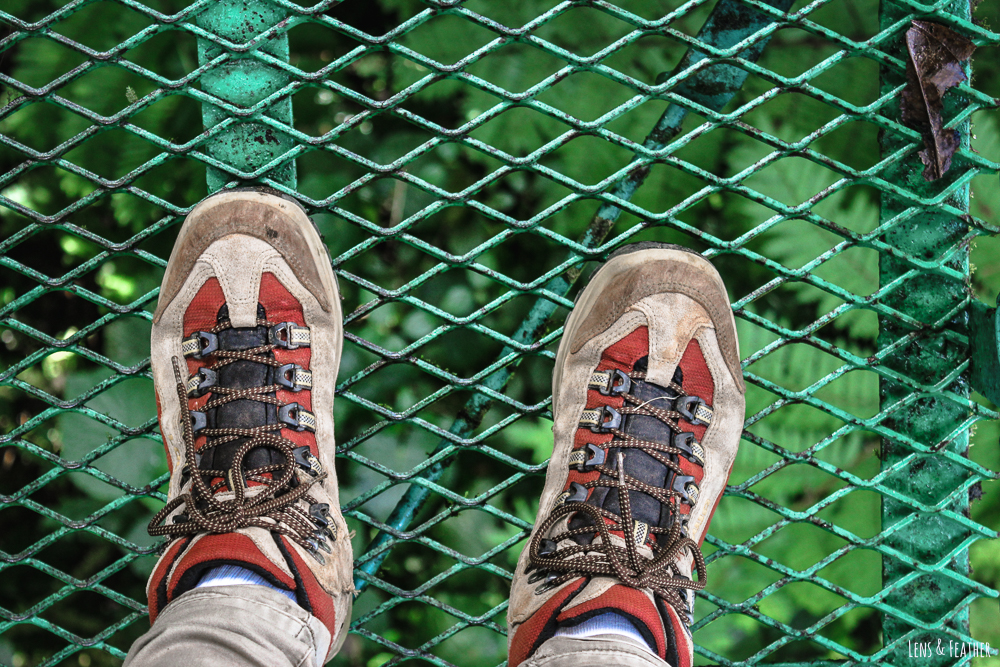
My verdict? Absolute delight! I would have happily gone back for another round. The views from the various bridges are simply breathtaking, and the sensation of looking out over the endless treetops from such heights is indescribable.
As you can see in the photos, I was fortunate enough to visit during the off-season, which meant I had the bridges almost entirely to myself at times. It was truly an unforgettable experience.
The Original Canopy Tour
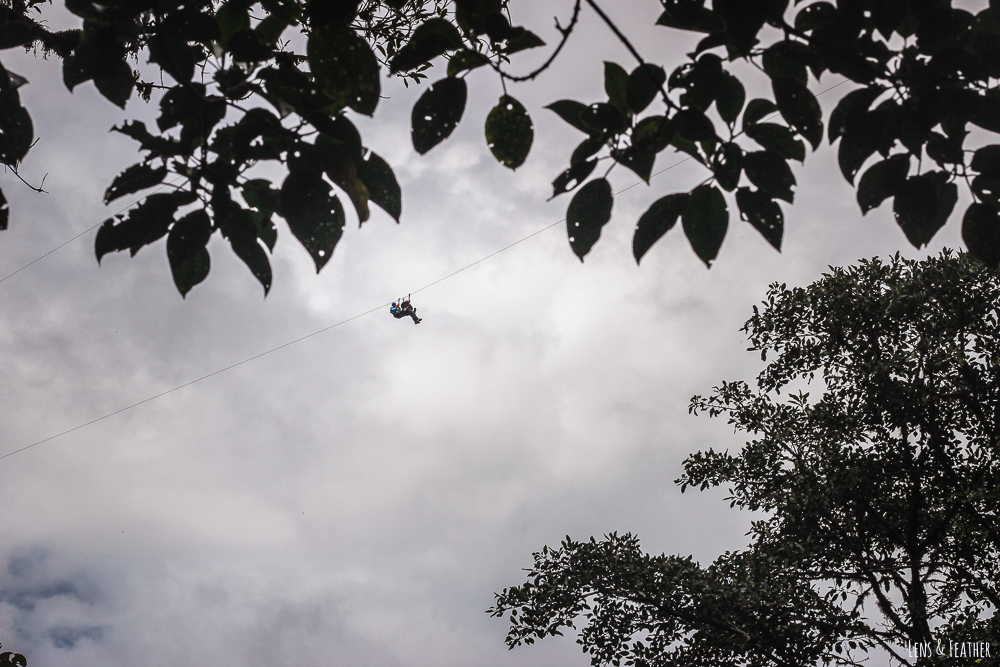
As the name suggests, the Original Canopy Tour was the first zipline course in Monteverde, sparking the boom that followed. Today, the competition is fierce, and while the Original Tour may not match others in terms of height and speed, it has retained its original mission.
This tour is primarily focused on bringing visitors closer to the cloud forest and its inhabitants.
The Original Canopy Tour features 14 platforms, 3 miles (5 kilometers) of hiking trails, and even a unique opportunity to rappel down through the inside of an ancient fig tree.
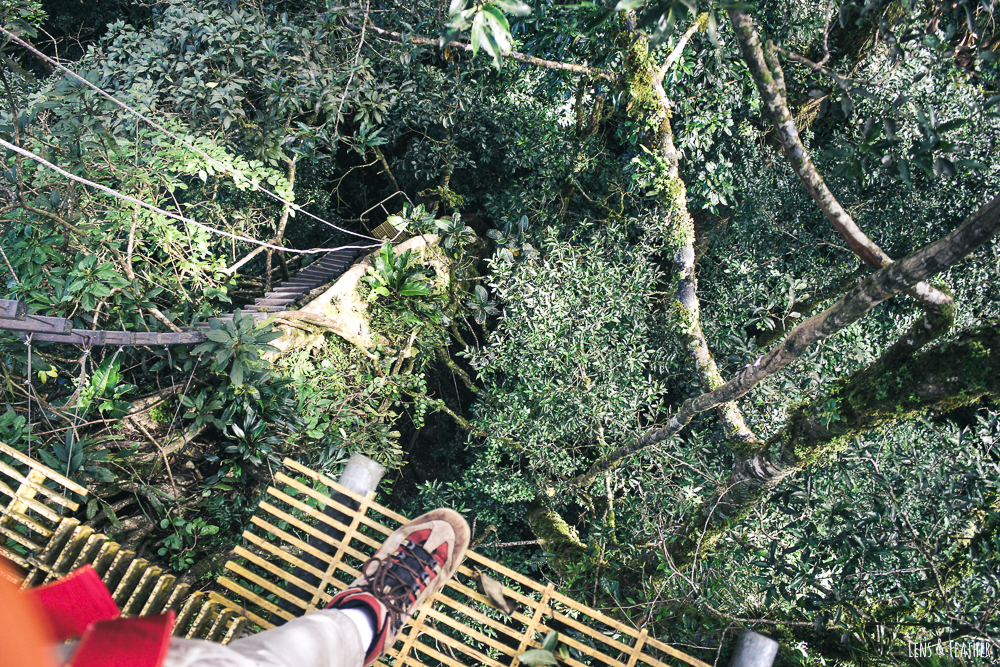
My first zip line experience
On my last day in Monteverde, I found myself standing on a small, elevated platform high in the trees of the cloud forest, with a safety harness around my waist and a slightly too small helmet on my head.
Joining me were two guides and only two other travelers—a pleasantly small group. After a thorough briefing, we were off, soaring through the air. The trees, ferns, and shrubs blurred into a single dark green rush around me, and every platform offered a new breathtaking view over the vast, seemingly endless forest.
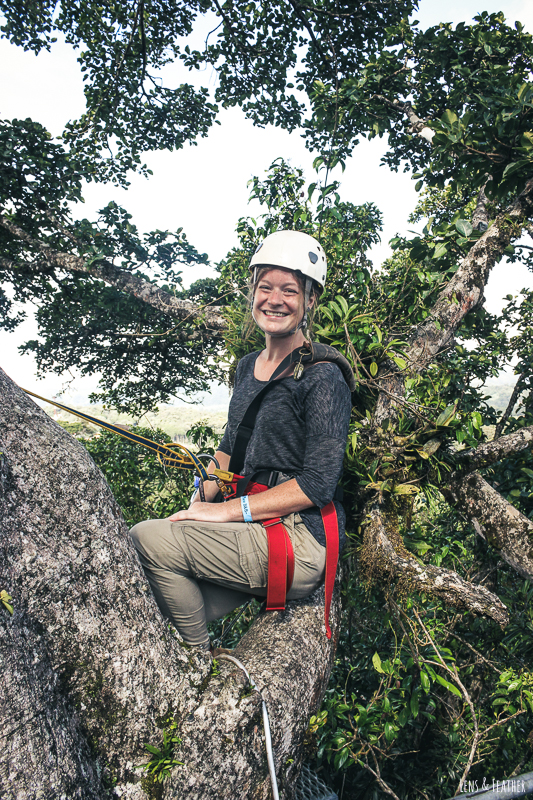
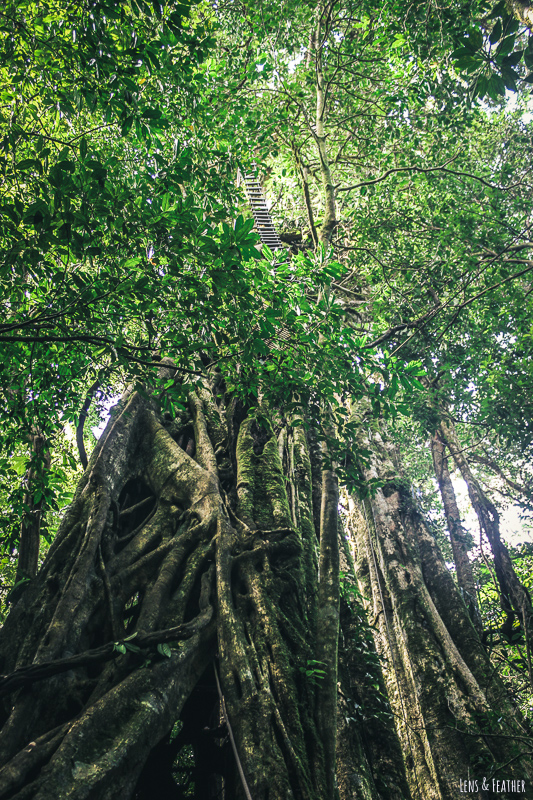
Magic moment in Monteverde
Just when you think the views couldn’t possibly get any more spectacular, the next platform delivers yet another jaw-dropping panorama, and I completely gave up trying to wipe the permanent grin off my face.
Then, somewhere between platforms 9 and 12, the unexpected happened.
Of course, I had carried a tiny spark of hope with me the whole time in Monteverde. But as I sped towards the next platform, high among the treetops, I was still completely unprepared when our guide started gesturing from afar, signaling me to stay quiet. Once I reached the platform, he hurriedly pointed to my camera and then cautiously indicated a branch just a few meters away from our tree.
Following his gaze, my heart immediately skipped a beat. The vibrant emerald green, the bright red, and those majestic long feathers—I recognized them instantly.
Perched on the branch was a magnificent quetzal.
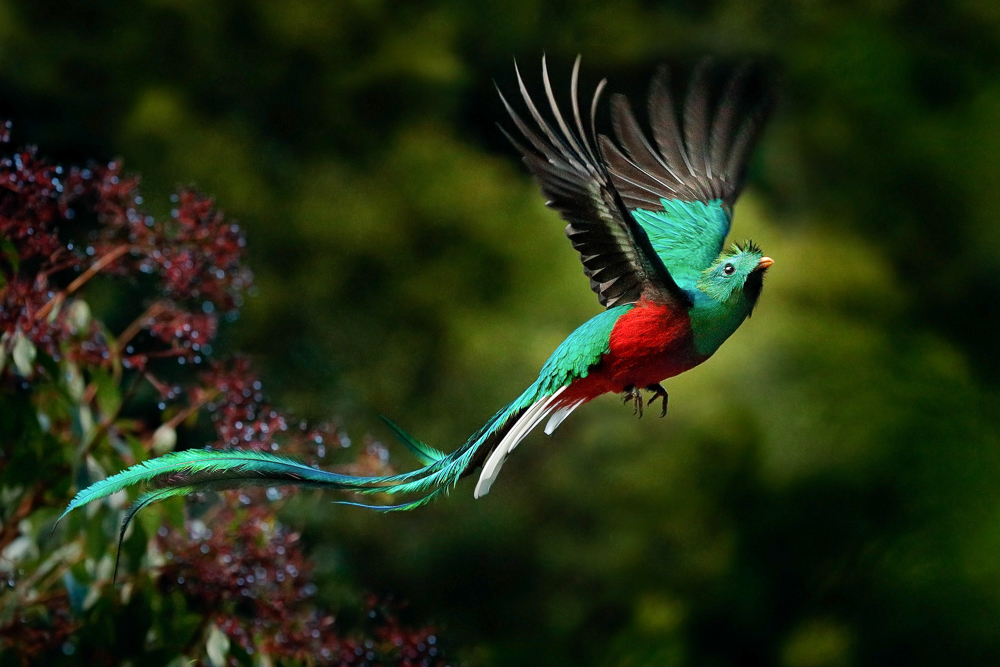
And just as quickly as it appeared, it was gone.
But I had seen it—the legendary bird of Costa Rica. As fleeting as it was, that magical moment up there on the tiny platform above the treetops meant more to me than any lightning-fast zip line ever could.
That’s why this canopy tour remains one of the absolute highlights of my time in Costa Rica.
Practical information and travel tips for Monteverde
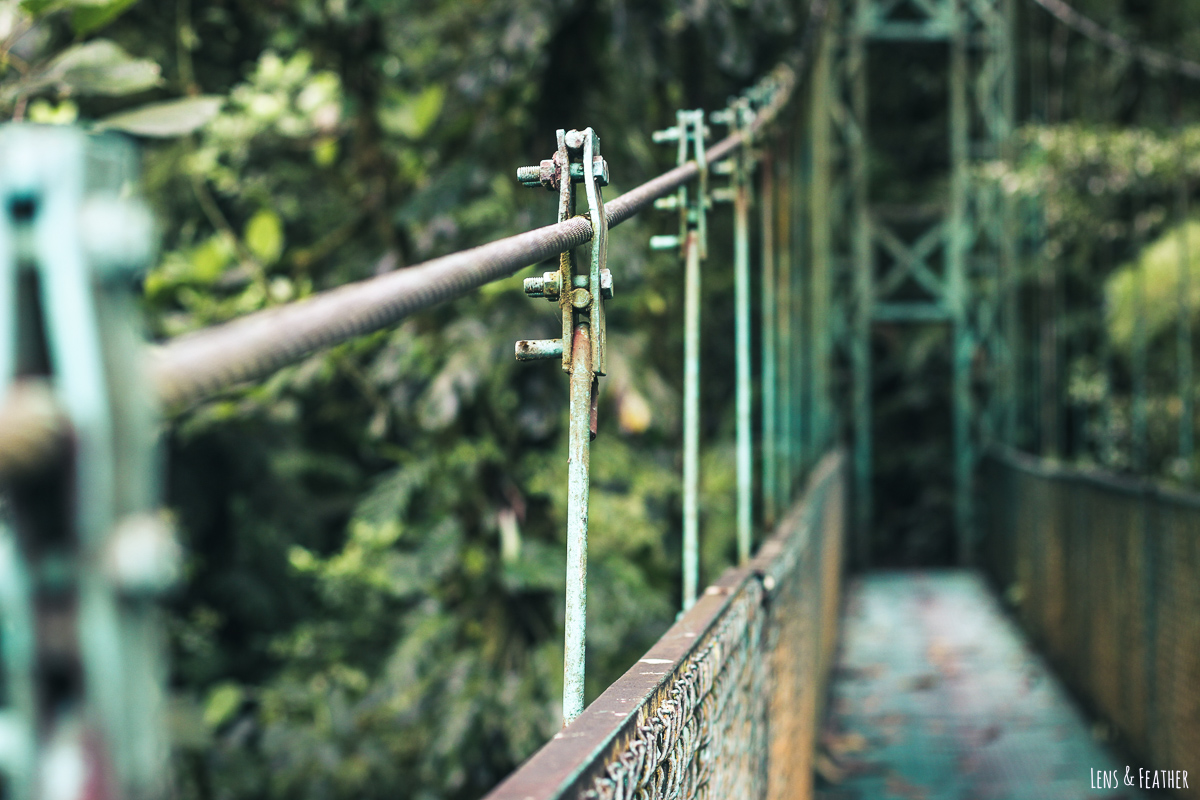
Money-saving tips and tourist traps in Monteverde
Visit Monteverde on a budget
Tour costs: Budget travelers should be aware that organized tours in Monteverde can be quite pricey. Entrance fees for attractions like hanging bridges or zip-lining often start around $50 or more. To manage costs, consider selecting just one or two key activities, or plan your budget ahead of time if you want to experience the full range of adventure options.
Do your research
Compare providers and prices: It’s a good idea to do some research on different tour providers and prices before you arrive. In Monteverde, as in many tourist destinations, commissions often drive recommendations, which means that the tour your hotel receptionist suggests may not always be the best one for you, but rather the one that offers the highest commission.
Trust your guts
Be Informed: To avoid falling into a tourist trap, make sure to gather information beforehand (yeah, you’re at the right place for that here) and trust your instincts. Don’t be afraid to ask questions or seek out reviews online to ensure you’re getting the best experience for your money.
Weather in Monteverde and the best time to visit
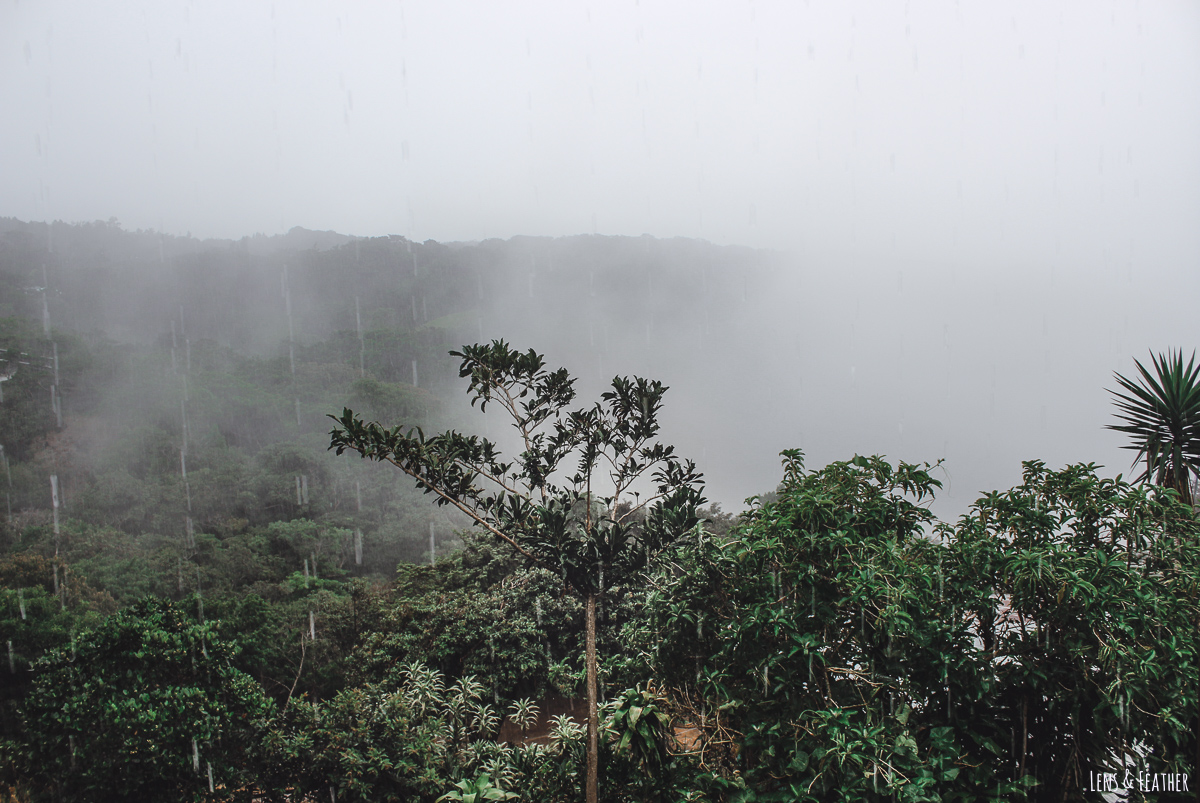
The weather in Monteverde definitely has a mind of its own. Be prepared for rain, fog, muddy trails, and cooler temperatures no matter when you visit.
If that already sounds daunting to you, your best bet is to plan your trip between January and April. These are the driest months in Monteverde and are often considered the best time to visit.
But if you’re not afraid of a little rain (or made of sugar, as we like to say in Germany), there’s no reason to avoid Monteverde during the wet season. Just make sure you pack the right clothing and rain gear.
Tip: During the rainy season, it’s a good idea to schedule longer activities like canopy tours as early in the day as possible. Rain typically starts in the afternoon, so you’ll likely be back at your accommodation by the time the showers begin.
Monteverde is much higher in elevation than most other places in Costa Rica, so the weather difference is something you shouldn’t underestimate. It’s better to bring an extra sweater than to be caught unprepared.
And don’t forget to enjoy the mystical aura of the misty forest and the stunning rainbows that often appear over the cloud forest.
What to Pack for Monteverde
- Rain Jacket or Poncho: A must-have to stay dry in the unpredictable weather.
- Hiking Boots or Sturdy Footwear: Essential for navigating muddy and uneven trails.
- Warmer Clothing: Be sure to pack long pants and a sweater for the cooler temperatures.
- Sun Protection: Depending on the weather, sunscreen and a hat can still be important, even in the cloud forest.
Do you need insect repellent in Monteverde?
Good news: Thanks to the high altitude, you likely won’t need any bug spray in Monteverde. A small trade-off for the frequent rain, don’t you think?
Where to stay in Monteverde and Santa Elena
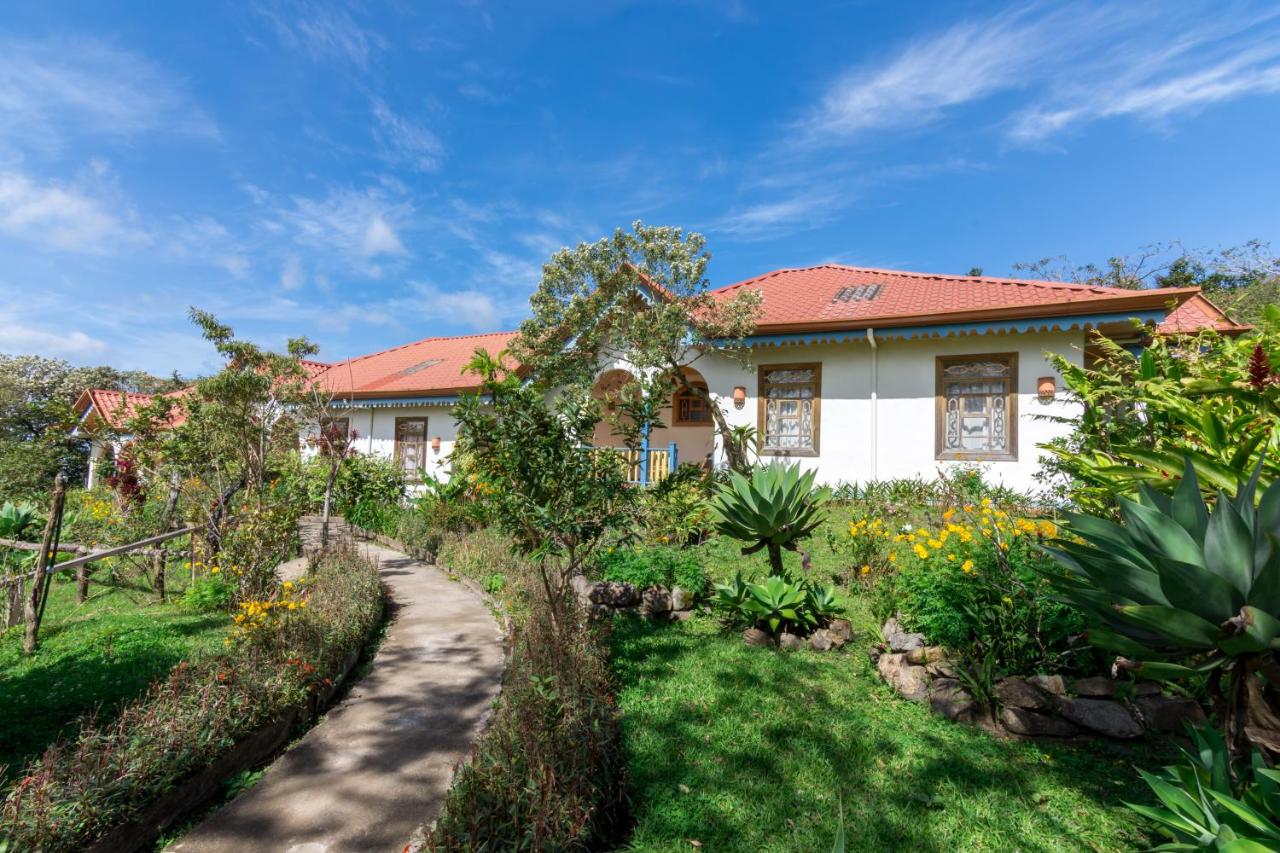
Backpackers and budget travelers will find the best accommodations directly in Santa Elena. Meanwhile, Monteverde, Cerro Plano, and the surrounding areas offer more mid-range to luxury hotels. During the high season, it’s wise to book as early as possible to avoid finding yourself without a place to stay.
Depending on your budget, here are some accommodations:
Pension Santa Elena ➳ Beds from $12
This hostel has something for every budget, from affordable dorm rooms to deluxe suites in the annex. Located right in the center of Santa Elena, this laid-back accommodation with a backpacker vibe offers everything you need to explore the area. The rooms are impeccably clean, the hosts are always helpful, and the atmosphere is cozy and welcoming.
Hotel Claro de Luna ➳ Double rooms from $50
A charming hotel surrounded by a beautiful tropical garden. Although it’s centrally located, the atmosphere here is peaceful and quiet, making it the perfect spot to unwind after adventures in Monteverde’s rainforests. The breakfast is excellent, too!
Camino Verde B&B ➳ Double rooms from $50
This well-maintained, lovingly decorated bed and breakfast offers a fantastic view of the surrounding cloud forests and mountains from its rooftop terrace. Many rooms also feature private balconies. While it’s located on the edge of town, bars, restaurants, and shops are all within easy walking distance.
Find available accommodations in Monteverde
On the map, you can see the current prices and check the availability for your travel dates directly.
How to get to Monteverde
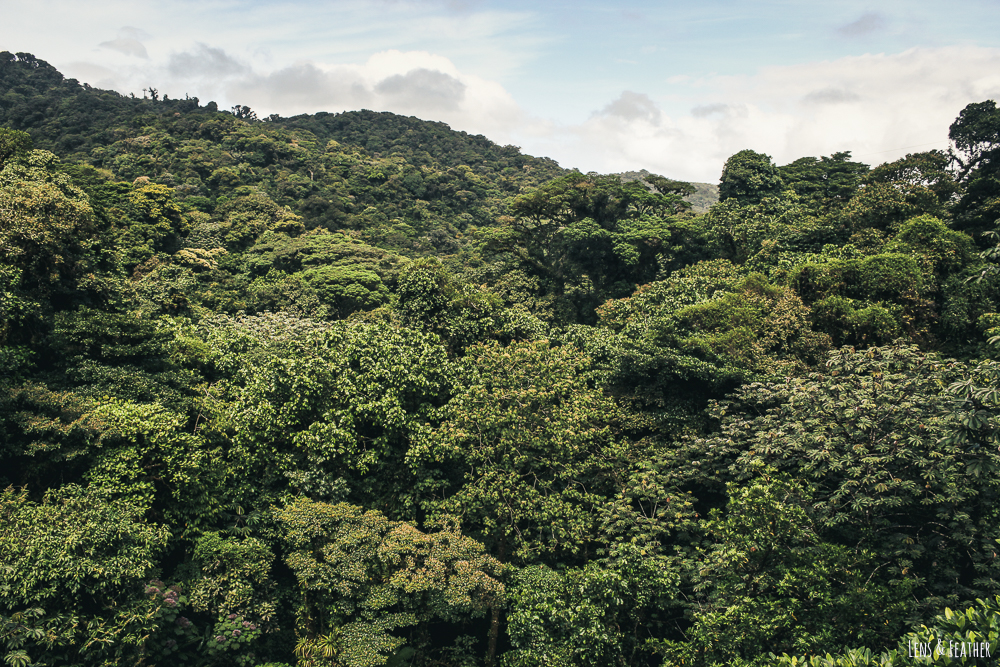
Travel to Monteverde by public bus
Monteverde is fairly accessible from all directions via public buses. However, all buses stop at the bus station in Santa Elena. This is convenient for most backpackers and budget travelers, as many accommodations are located here.
If you need to continue directly to Monteverde, you’ll either have to walk a good distance or take a taxi from Santa Elena.
From San José to Monteverde by public bus
Traveling from San José to Monteverde by bus costs about $5 and takes around five hours. The bus company Transmonteverde operates only two buses daily from San José, departing at 6:30 AM and 2:30 PM.
Get to the nature reserves by public bus
Buses run multiple times daily between Monteverde Reserve, Santa Elena Reserve, and Santa Elena for just $2. These buses stop in Santa Elena in front of the Banco Nacional.
Travel between La Fortuna and Monteverde by public bus
The bus connection between La Fortuna and Monteverde isn’t as convenient. With a stopover in Tilarán, the journey takes around seven hours. However, at around $5, it’s the most affordable option.
From Monteverde, buses depart for Tilarán at 4:00 AM and 12:30 PM, taking 2.5 hours. After a two-hour layover, you can continue to La Fortuna.
If your budget allows, it’s better to choose the Jeep-Boat-Jeep option (see below) or rent a car.
Drive to Monteverde by car
Despite local protests, there are now far more paved roads leading to Monteverde than there were a few years ago. Still, it’s wise to check the location of your accommodation in advance.
Depending on how remote some lodges or resorts are, you may need a vehicle with four-wheel drive to navigate the surrounding areas.
Tip: If you’re coming from La Fortuna or Arenal Volcano, avoid the route through Tilarán and instead take the one through Tronadora and Rio Chiquito. While it’s slightly longer and rougher, it offers stunning views as it winds along the lake.
By Jeep and Boat to Monteverde or La Fortuna
The Jeep-Boat-Jeep combination is the fastest and arguably the most scenic route between La Fortuna and Monteverde via Santa Elena.
From La Fortuna, you’ll take a minibus to Lake Arenal, followed by a beautiful boat ride across the lake. On the other side, a four-wheel-drive taxi will take you to Santa Elena and Monteverde.
The entire journey takes about three hours, costs between $25 and $40, and can be arranged almost anywhere in either destination, or book here online.
However you choose to get to Monteverde, I wish you an amazing time!
Did you find my Monteverde travel guide helpful? Do you have additional tips or questions about Monteverde? Feel free to leave a comment below!

